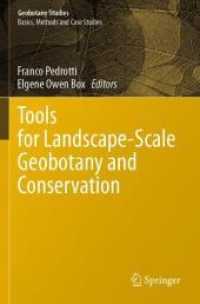- ホーム
- > 洋書
- > 英文書
- > History / World
Full Description
First published in 1989, What's New? puts innovation firmly back on the agenda of archaeological interpretation. This book revives interest in the process of innovation and reinterprets it by drawing on original work done in a variety of disciplines. It demonstrates that the study of the components of innovation—invention, acceptance, and the context in which they occur—is essential if social change is to be better understood.
The book contains detailed case studies that cover a broad geographical range in the prehistoric, historic, and modern world. It simulates and analyses the conditions of innovation and provides the necessary theoretical framework. The technologies involved are diverse: herding, fishing, pottery-making, metalworking, and land management. Several important issues emerge from this diversity: it is the context of innovation that determines whether change will take place; within hierarchical societies, ideology can both stimulate and deny innovation; and the potential for innovation, experimentation, and change in traditional societies is systematically underrated by the Western world, which is dominated by a narrow, technological perspective. The contributors also study innovation in social and applied anthropology, industrial planning, and the natural sciences.
What's New? will provoke renewed discussion throughout the archaeological community about the process of innovation. Anthropologists, human geographers, and other social scientists will find it fascinating because it provides a time dimension for the study of the conditions of human and social change.
Contents
Introduction: what's new about innovation? 1. Innovation and the integration of sociocultural systems 2. Pellaport 3. Alternative technologies and socio-economic contexts of adaptation: a study of the coastal fishermen of Saurashtra in western India 4. The genesis of coaxial field systems 5. Dynamics of production intensification in precontact Hawaii 6. The impact of Inca conquest on local technology in the Upper Montaro Valley, Peru 7. Technological change as social rebellion 8. Technological continuity and change among the Andrea peasants: opposition between local and global strategies 9. Ignoring innovation-denying change: the role of iron and the impact of external influences on the transformation of Scandinavian societies 800-500 BC 10. The beginnings of pottery as an economic process 11. The context of adoption of brass technology in northeastern Nigeria and its effects on the elaboration of culture 12. Innovation theory made plain 13. Modelling innovation and change 14. Modelling the innovative component of social change 15. Risk, perception, innovation 16. Cultural transmission and cultural change








